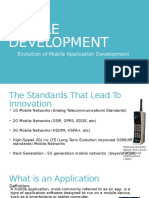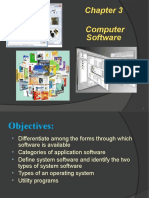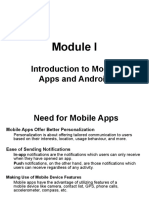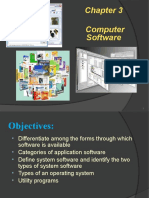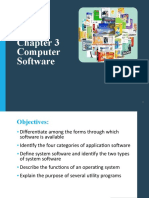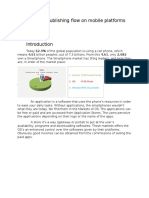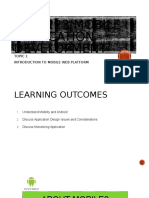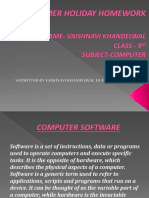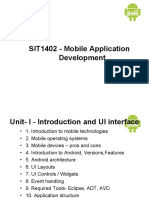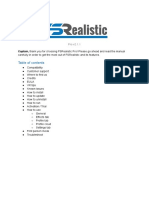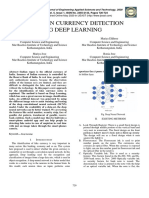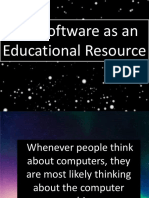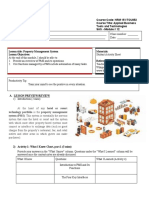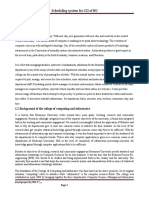0% found this document useful (0 votes)
30 views25 pagesUnit 3
The document provides an overview of computer software, including its definition, functions, and classifications such as system and application software. It discusses operating systems, utility programs, mobile applications, and the differences between custom and off-the-shelf software. Additionally, it covers enterprise software, ERP systems, customer relationship management, supply chain management, and various types of software licenses.
Uploaded by
Biraj DCCopyright
© © All Rights Reserved
We take content rights seriously. If you suspect this is your content, claim it here.
Available Formats
Download as PPTX, PDF, TXT or read online on Scribd
0% found this document useful (0 votes)
30 views25 pagesUnit 3
The document provides an overview of computer software, including its definition, functions, and classifications such as system and application software. It discusses operating systems, utility programs, mobile applications, and the differences between custom and off-the-shelf software. Additionally, it covers enterprise software, ERP systems, customer relationship management, supply chain management, and various types of software licenses.
Uploaded by
Biraj DCCopyright
© © All Rights Reserved
We take content rights seriously. If you suspect this is your content, claim it here.
Available Formats
Download as PPTX, PDF, TXT or read online on Scribd
/ 25







